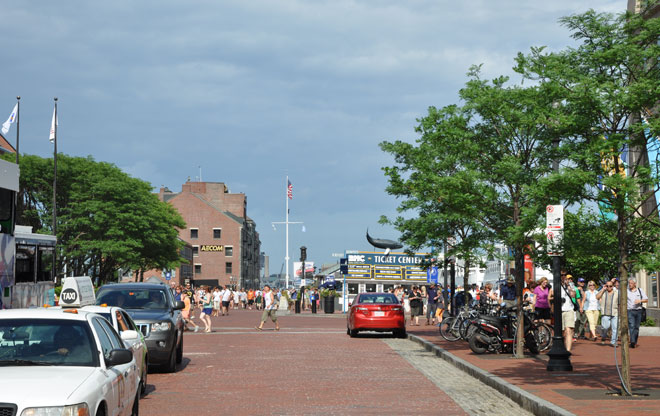
Where the Trees Stop
The towering mast of the Long Wharf flag pole draws visitors from the city out to the harbor. Though the entire site—in fact much of the city—was once covered by water, the current edge of land and transition to wharf is subtly expressed by the point where street trees stop. Over structure, planting can only be used to shape the landscape to the extent that soil is provided in planters or raised beds.
Image: Susannah Ross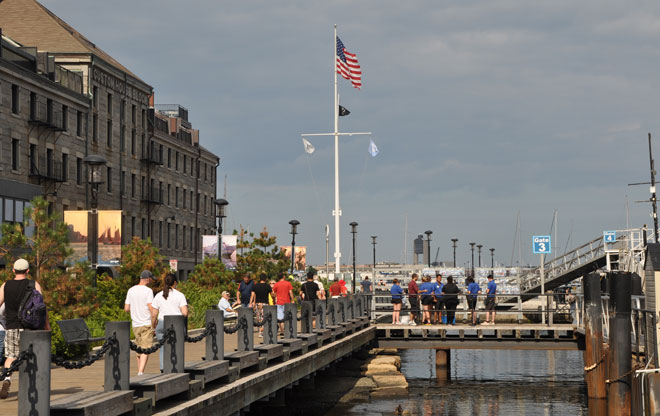
Drawn Along
Planting out over the water, as shown here, is lower to the ground and showing signs of stress, given whatever limited amount of soil has been provided. Visitors make the procession to the water—whether to the end of Long Wharf itself or to one of the many ferries that depart here—drawn along by the heavy nautical chain railing and line of lantern-like light poles. Off in the distance the air traffic control tower for Logan Airport rises from across the harbor in East Boston.
Image: Susannah Ross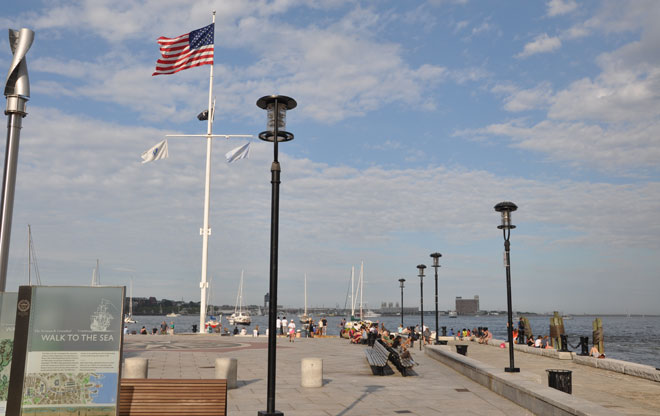
Expansive Plaza
By the time one reaches the plaza at the end of Long Wharf, there is no planting in the ground to be seen at all—the expansive paved surface might feel barren and cold in another setting, but here it is a subtle reminder that this is a pier perched on structure and about an experience of the harbor. The wharf also represents the grand terminus of the Norman B. Leventhal walk to the sea.
Image: Susannah Ross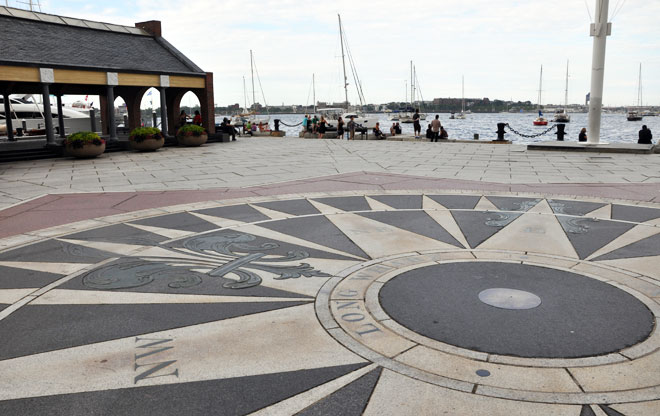
Compass Rose
The compass rose inscribed on the plaza provides orientation, color and interest to the space. Standing in its center, visitors are encouraged to rotate 360 degrees, taking in views to the harbor, north and south along the waterfront, and back to the skyline of the city from which they have come.
Image: Susannah Ross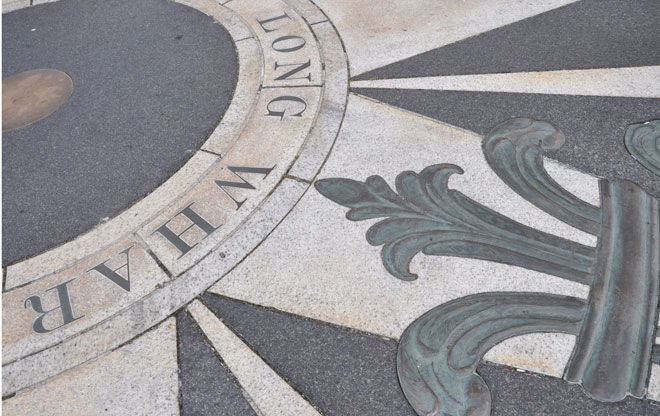
Designed to Withstand Everything
The compass is comprised of only the most durable of materials—granite and bronze—allowing it to withstand the harsh waterfront weather, and the many feet, skateboards, and bicycles that pass over its surface every day. As such the important element has maintained its legibility and integrity for almost 25 years.
Image: Susannah Ross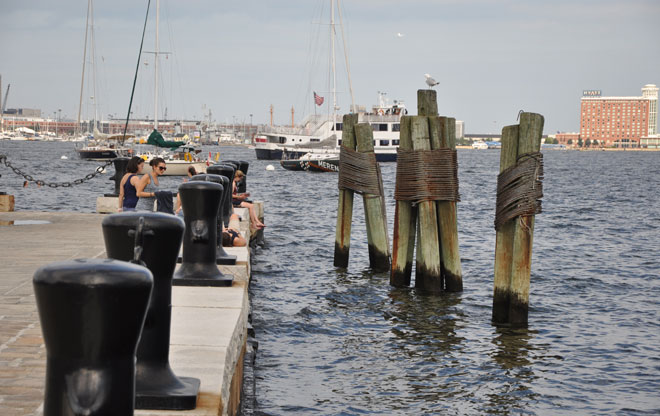
Experiencing the Harbor
Historic bundled pilings combine with oversize industrial cleats and chains and the jangle of sailboats rocking back and forth on their moorings to intensify the experience of the harbor. Granite blocks provide places to rest and enjoy the view, take a nap, or swing one’s bare feet out over the water.
Image: Susannah Ross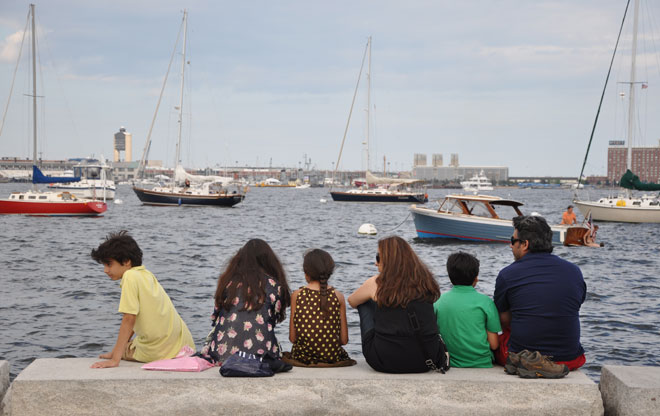
A Place to Pause
In a day likely filled with immersion in the many historic layers and sites of Boston, Long Wharf provides a moment for a family to sit down as a group, put the city behind them, and simply take in the breeze, the smells, the sounds, and the view.
Image: Susannah Ross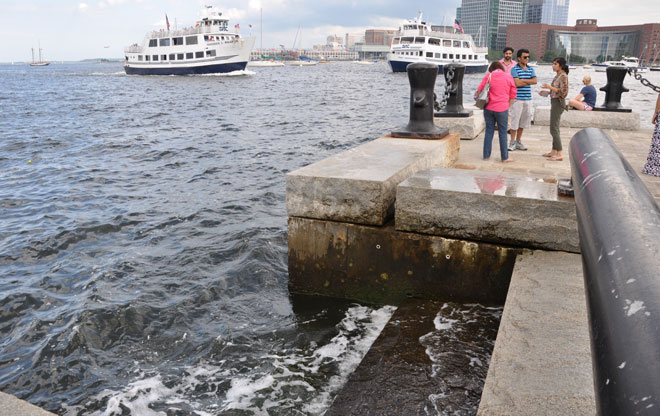
Bringing the Water in
Long Wharf is one of few places on the harbor where, if the tide is right, a person can actually reach out and touch the water, thanks to this stepped edge. The little cove cut into the face of the wharf brings water into the space, giving an intimate experience of the waves and the salt spray that would not be possible with a simple linear edge.
Image: Susannah Ross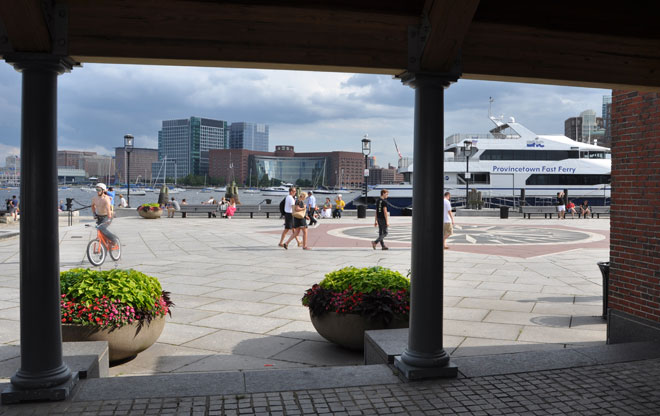
The Seaport
Historic Long Wharf looks out onto the glassy mirror of Moakley Courthouse, a more recent arrival to Boston’s waterfront. The once lonely civic anchor is now the westernmost component of a burgeoning business, residential and entertainment district—the Seaport—that has transformed the once purely industrial southern edge of Boston Harbor.
Image: Susannah Ross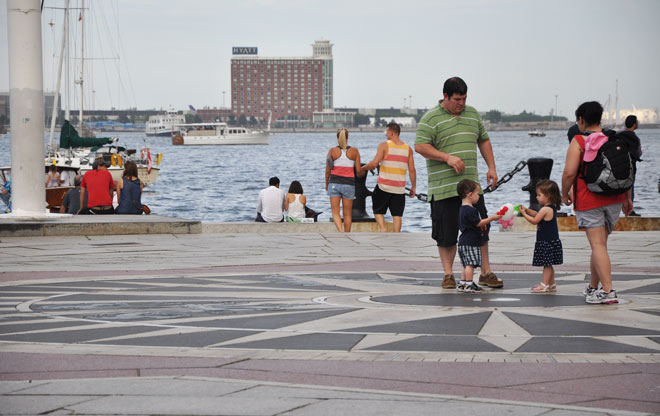
Defining a Space
Visitors instinctively gather at the center of the compass rose, showing how effectively a two-dimensional expression in paving can help define a space.
Image: Susannah Ross